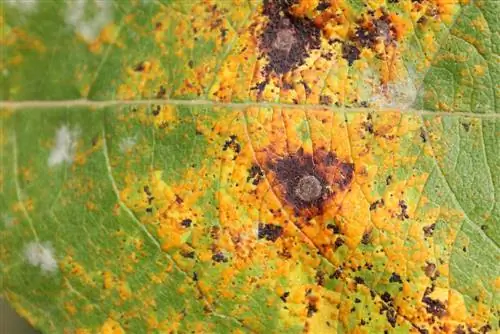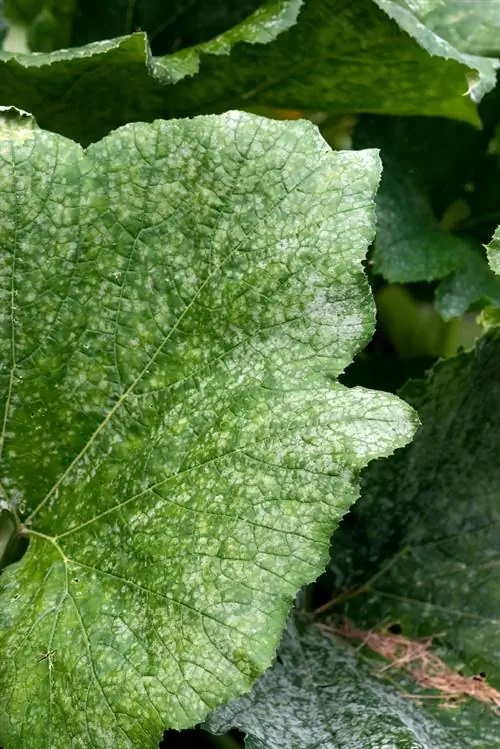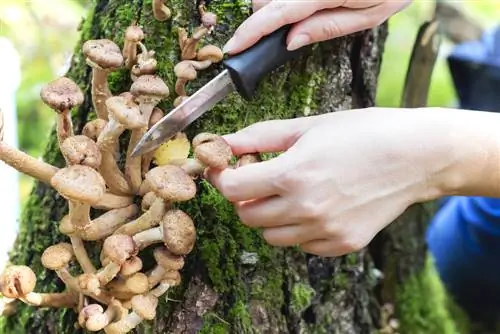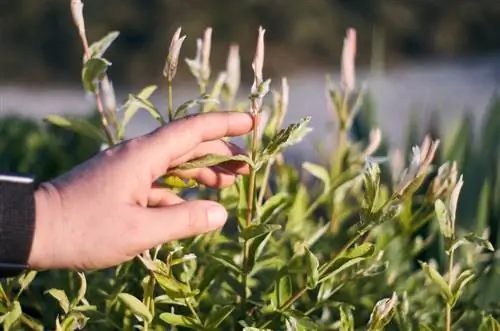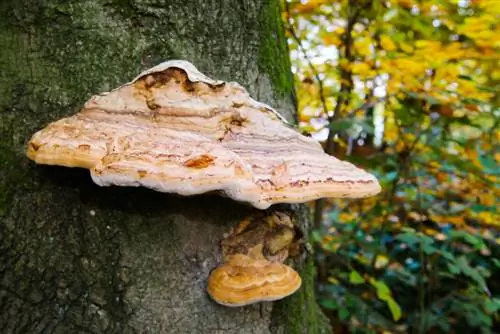- Author admin [email protected].
- Public 2024-01-05 20:48.
- Last modified 2025-01-23 11:21.
Weeping willows, with their sprawling crowns, offer an excellent habitat for more than just birds and insects. Fungi also like to nest in the deciduous tree, sometimes causing major damage. In the event of an acute fungal infestation, it is important to act quickly. That's why you'll find useful information on this page to help you recognize symptoms of various parasites in good time and take targeted action against the respective fungus.

Which fungi attack weeping willows and what can you do about it?
Weeping willows can be attacked by fungi such as Marssonina salicicola and Melampsora salicina. The former is manifested by necrosis on leaves and shoots and tip drought, while the latter causes yellow spores and spots on the leaves. As a preventative measure, the crown should be thinned out and leaves removed.
The most common mushrooms on the weeping willow
- Marssonina salicicola
- Melampsora salicina
Marssonina salicicola
This fungus causes the well-known Marssonina disease on the weeping willow. It is one of the most frequently observed diseases of the deciduous tree. The following symptoms indicate an infestation:
- Flowers, leaves, twigs and shoots are affected.
- 3mm necrosis forms on the leaves.
- Crippled Leaves
- Premature leaf shedding
- Bursting, scab-like necrosis on young, green shoots
- Causes tip drought (dying of the shoot tip)
- Bushes on the pasture
Marssonina salicicola occurs mainly in spring. Its dark fruit bodies overwinter on the leaves or in fallen leaves on the ground. A moist, warm climate promotes its formation. The best way to prevent an infestation is to ensure good air circulation by constantly thinning out the crown. You should always remove fallen leaves because, as mentioned, they represent a nesting place for the larvae. If the weeping willow is already infected, you must remove all diseased parts of the tree.
Melampsora silicicola
The rust attack that this fungus causes can be clearly recognized by the following symptoms:
- Bright, yellow spores on the undersides of the leaves
- Yellow spots on the tops of the leaves
Severe infestations result in leaf yellowing and premature shedding of leaves. Melapsora salicicola is not only found on the weeping willow. The fungus usually looks for an intermediate host, with numerous tree species being possible. To avoid infestation, you should extend the distance between the weeping willow and endangered trees as much as possible.

